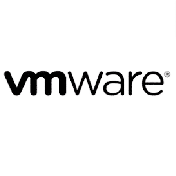Seminarinhalt
Sie lernen Sicherheit für Netzwerke, Cloud und Content, Endpoint-Protection, sicheren Netzwerkzugriff, Transparenz und Durchsetzung.
Sie erhalten umfassende praktische Erfahrung mit der Bereitstellung von Cisco Firepower Next-Generation Firewall und Cisco ASA Firewall, Konfigurieren von Zugriffssteuerungsrichtlinien, E-Mail-Richtlinien und 802.1X-Authentifizierung.
Sie erhalten eine Einführung in die Bedrohungserkennungsfunktionen von Cisco Stealthwatch Enterprise und Cisco Stealthwatch Cloud.
Nach Abschluss des Trainings haben die Teilnehmer*innen Kenntnisse zu folgenden Themen:
- Informationssicherheitskonzepte und -strategien innerhalb des Netzwerks
- Gängige TCP / IP-, Netzwerkanwendungs- und Endpunktangriffe
- Wie verschiedene Netzwerksicherheitstechnologien zusammenarbeiten, um sich vor Angriffen zu schützen
- Implementieren der Zugriffskontrolle auf der Cisco ASA-Appliance und der Cisco Firepower Next-Generation-Firewall
- Implementieren grundlegender Sicherheitsfunktionen für E-Mail-Inhalte, die von der Cisco Email Security Appliance bereitgestellt werden
- Implementieren von Sicherheitsfunktionen für Webinhalte, die von der Cisco Web Security Appliance bereitgestellt werden
- Sicherheitsfunktionen von Cisco Umbrella, Bereitstellungsmodelle, Richtlinienverwaltung und Investigate-Konsole
- VPNs und Kryptografielösungen und -algorithmen
- Sichere site-to-site connectivity von Cisco und Bereitstellung von Cisco IOS VTI-basierten Point-to-Point-IPSec-VPNs und Point-to-Point-IPSec-VPNs auf Cisco ASA und Cisco FirePower NGFW
- Bereitstellen von Cisco Secure Remote Access-Konnektivitätslösungen und Konfiguration der 802.1X- und EAP-Authentifizierung
- Grundlegendes Verständnis der Endpunktsicherheit und AMP for Endpoints-Architektur und die grundlegenden Funktionen
- Verschiedene Schutzmechanismen auf Cisco-Geräten, die die Steuerungs- und Verwaltungsebene schützen
- Konfigurieren und überprüfen von Datenebenensteuerelementen der Cisco IOS-Software Layer 2 und Layer 3
- Cisco Stealthwatch Enterprise- und Stealthwatch Cloud-Lösungen
- Grundlagen von Cloud Computing und häufigen Cloud-Angriffen sowie der Sicherung der Cloud-Umgebung
Programm
- Information Security Overview
- Managing Risk
- Vulnerability Assessment
- Understanding CVSS
- Legacy TCP/IP Vulnerabilities
- IP Vulnerabilities
- ICMP Vulnerabilities
- TCP Vulnerabilities
- UDP Vulnerabilities
- Attack Surface and Attack Vectors
- Reconnaissance Attacks
- Access Attacks
- Man-In-The-Middle Attacks
- Denial of Service and Distributed Denial of Service Attacks
- Reflection and Amplification Attacks
- Spoofing Attacks
- DHCP Attacks
- Password Attacks
- DNS-Based Attacks
- DNS Tunneling
- Web-Based Attacks
- HTTP 302 Cushioning
- Command Injections
- SQL Injections
- Cross-Site Scripting and Request Forgery
- Email-Based Attacks
- Buffer Overflow
- Malware
- Reconnaissance Attack
- Gaining Access and Control
- Gaining Access via Social Engineering
- Gaining Access via Web-Based Attacks
- Exploit Kits and Rootkits
- Privilege Escalation
- Post-Exploitation Phase
- Angler Exploit Kit
- Defense-in-Depth Strategy
- Defending Across the Attack Continuum
- Network Segmentation and Virtualization Overview
- Stateful Firewall Overview
- Security Intelligence Overview
- Threat Information Standardization
- Network-Based Malware Protection Overview
- IPS Overview
- Next Generation Firewall Overview
- Email Content Security Overview
- Web Content Security Overview
- Threat Analytic Systems Overview
- DNS Security Overview
- Authentication, Authorization, and Accounting Overview
- Identity and Access Management Overview
- Virtual Private Network Technology Overview
- Network Security Device Form Factors Overview
- Cisco ASA Deployment Types
- Cisco ASA Interface Security Levels
- Cisco ASA Objects and Object Groups
- Network Address Translation
- Cisco ASA Interface ACLs
- Cisco ASA Global ACLs
- Cisco ASA Advanced Access Policies
- Cisco ASA High Availability Overview
- Cisco Firepower NGFW Deployments
- Cisco Firepower NGFW Packet Processing and Policies
- Cisco Firepower NGFW Objects
- Cisco Firepower NGFW NAT
- Cisco Firepower NGFW Prefilter Policies
- Cisco Firepower NGFW Access Control Policies
- Cisco Firepower NGFW Security Intelligence
- Cisco Firepower NGFW Discovery Policies
- Cisco Firepower NGFW IPS Policies
- Cisco Firepower NGFW Malware and File Policies
- Cisco Email Content Security Overview
- SMTP Overview
- Email Pipeline Overview
- Public and Private Listeners
- Host Access Table Overview
- Recipient Access Table Overview
- Mail Policies Overview
- Protection Against Spam and Graymail
- Anti-virus and Anti-malware Protection
- Outbreak Filters
- Content Filters
- Data Loss Prevention
- Email Encryption
- Cisco WSA Overview
- Deployment Options
- Network Users Authentication
- HTTPS Traffic Decryption
- Access Policies and Identification Profiles
- Acceptable Use Controls Settings
- Anti-Malware Protection
- Cisco Umbrella Architecture
- Deploying Cisco Umbrella
- Cisco Umbrella Roaming Client
- Managing Cisco Umbrella
- Cisco Umbrella Investigate Overview
- VPN Definition
- VPN Types
- Secure Communication and Cryptographic Services
- Keys in Cryptography
- Public Key Infrastructure
- Site-to-Site VPN Topologies
- IPsec VPN Overview
- IPsec Static Crypto Maps
- IPsec Static Virtual Tunnel Interface
- Dynamic Multipoint VPN
- Cisco IOS FlexVPN
- Cisco IOS VTIs
- Static VTI Point-to-Point IPsec IKEv2 VPN Configuration
- Point-to-Point VPNs on the Cisco ASA and Cisco Firepower NGFW
- Cisco ASA Point-to-Point VPN Configuration
- Cisco Firepower NGFW Point-to-Point VPN Configuration
- Remote Access VPN Components
- Remote Access VPN Technologies
- SSL Overview
- Remote Access Configuration Concepts
- Connection Profiles
- Group Policies
- Cisco ASA Remote Access VPN Configuration
- Cisco Firepower NGFW Remote Access VPN Configuration
- Cisco Secure Network Access
- Cisco Secure Network Access Components
- AAA Role in Cisco Secure Network Access Solution
- Cisco Identity Services Engine
- Cisco TrustSec
- 802.1X and EAP
- EAP Methods
- Role of RADIUS in 802.1X Communications
- RADIUS Change of Authorization
- Cisco Catalyst Switch 802.1X Configuration
- Cisco WLC 802.1X Configuration
- Cisco ISE 802.1X Configuration
- Supplicant 802.1x Configuration
- Cisco Central Web Authentication
- Host-Based Personal Firewall
- Host-Based Anti-Virus
- Host-Based Intrusion Prevention System
- Application Whitelists and Blacklists
- Host-Based Malware Protection
- Sandboxing Overview
- File Integrity Checking
- Cisco AMP for Endpoints Architecture
- Cisco AMP for Endpoints Engines
- Retrospective Security with Cisco AMP
- Cisco AMP Device and File Trajectory
- Managing Cisco AMP for Endpoints
- Identifying Network Device Planes
- Control Plane Security Controls
- Management Plane Security Controls
- Network Telemetry
- Layer 2 Data Plane Security Controls
- Layer 3 Data Plane Security Controls
- Infrastructure ACLs
- Control Plane Policing
- Control Plane Protection
- Routing Protocol Security
- Overview of Layer 2 Data Plane Security Controls
- VLAN-Based Attacks Mitigation
- STP Attacks Mitigation
- Port Security
- Private VLANs
- DHCP Snooping
- ARP Inspection
- Storm Control
- MACsec Encryption
- Infrastructure Antispoofing ACLs
- Unicast Reverse Path Forwarding
- IP Source Guard
* This section is self-study material that can be done at your own pace if you are taking the instructor-led version of this course.
Zielgruppen
- Security Engineer
- Network Engineer
- Network Designer
- Network Administrator
- Systems Engineer
- Consulting Systems Engineer
- Technical Solutions Architect
- Cisco Integrators/Partners
- Network Manager
- Cisco integrators and partners
Vorkenntnisse
- Fähigkeiten und Kenntnisse, die denen entsprechen, die im Kurs Implementing and Administering von Cisco Solutions (CCNA) erlernt wurden
- Vertrautheit mit Ethernet- und TCP / IP-Netzwerken
- Grundkenntnisse des Windows-Betriebssystems
- Grundkenntnisse in Cisco IOS-Netzwerken und -Konzepten
- Kenntnisse der Grundlagen von Netzwerksicherheitskonzepten
Trainings zur Vorbereitung
Wichtige Information
Für den Zugriff auf Ihre Seminarunterlagen ist ein Cisco Account erforderlich.
Wir empfehlen, hierfür eine persönliche E-Mail-Adresse zu verwenden, da die Unterlagen später nicht auf einen anderen Account übertragen werden können.
Registrierung unter: https://id.cisco.com/signin/register
Dieses Training bereitet Sie, gemeinsam mit Selbstlernmaterial, auf die Prüfung Implementing and Operating Cisco Security Core Technologies (350-701 SCOR) vor, die zu den neuen Zertifizierungen CCNP Security, CCIE Security und Cisco Certified Specialist - Security Core führt.




